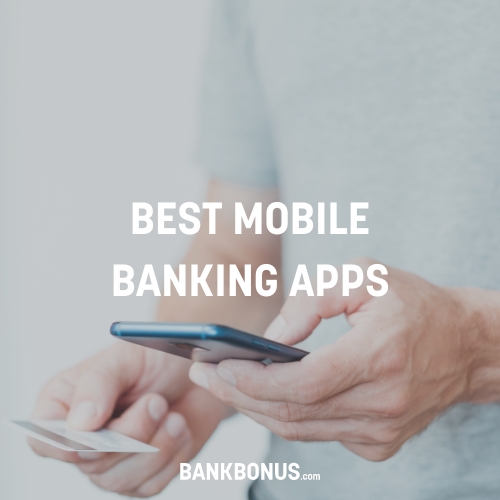Opening a teen checking account provides an excellent opportunity for them to learn about financial responsibility while they’re still in school.
Don’t we all wish that someone had taught us more about money management when we were younger?
I personally would have liked to know more about maintenance fees, savings accounts, and hidden costs before having to discover all of that on my own.
Another big advantage of having a bank account as a teen is convenience. It’s easier for teens and their parents to be on top of spending and savings.
Plus, it’s important to have money always available at the ATM in case of an emergency while traveling, and, really, anytime!
4 Best Teen Checking Accounts
Here are the top 4 teen checking accounts you can open today:
- 🏆 Capital One MONEY: The Best Online-Only Teen Checking Account
- Wells Fargo Clear Access Banking: The Best Brick-and-Mortar solution
- USAA Youth Spending Account: A special teen account for military families
- Alliant Teen Checking Account: A solid interest-bearing account
1. Capital One MONEY 
Best For: Online-Only Teen Checking Account
Capital One has a banking account dedicated to teens only, called the MONEY account.
One of the perks of this account is that it’s completely online, which means lower fees and higher interest rates than brick-and-mortar counterparts, plus it pays an annual percentage yield (APY) on all balances.
There are no fees or minimum amounts of deposit required to open the Capital One online account. It’s straightforward to set up; you can do it using a simple app on your phone—no appointment or waiting in line needed.
Capital one mobile banking app requires each teen to have an adult co-owner of the banking account, and they both receive separate login information.
After opening the account, the teens will receive a Capital One Mastercard debit card for kids and will be able to withdraw money from the 40,000 Capital One/ Allpoint ATMs for free.
The parents can check on the account’s activity, make a direct deposit, and even lock and unlock the card at any time. It is also possible to get alerts for every transaction.
When the teenager turns 18, he/she can transfer the balance from the teen account to a regular account with Capital One.
Pros:
- Easy and convenient online setup and transactions
- No fees or minimum balance
- 0.10% APY
- Many ATMs all over the country and free ATM withdrawals
- Good parental control
- Available only online/ mobile app
Cons:
- Online banking only
Learn More:
2. Wells Fargo Clear Access 
Best For: Brick-and-Mortar Banking for Teens
Clear Access Banking is Well Fargo’s new banking account for teens.
The minimum age to set up a Clear Access Banking account is 13, and teens 13 to 16 years old must have an adult co-owner of the checking account.
From 17+, they can set up their own account or opt for a joint one, as they wish.
Moreover, all teens (13-17 years old) are required to open their accounts in a Wells Fargo brick-and-mortar branch. They will then use online tools to check their balance, add or transfer money from a computer or a mobile banking app.
The account comes with a debit card and the possibility to withdraw money from over 13,000 Wells Fargo ATMs, but pay attention to out-of-network ATM fees. Wells Fargo charges $2.50 for domestic ATM use and $5 for international ATM use at non-Wells Fargo ATMs.
The Clear Access Banking account has no maintenance fees for primary account holders between 13 and 24. After that, the fee will be $5 a month. It also requires a $25 minimum deposit to be opened.
On the plus side, Wells Fargo doesn’t charge any overdraft fees or non-sufficient funds (NSF) fees. There are no risks of over-drafting the account because Wells Fargo doesn’t allow overdraft protection or services.
Pros:
- No overdraft or non-sufficient funds (NSF fees)
- From 17 years old, no joint account needed
- Available online/mobile apps
- No maintenance fees (for 13-24-year-olds)
Cons:
- A minimum deposit of $25 is required to open the account.
- Must go to a branch to set up the account, no online only for teens.
- Extra fees for ATM withdrawals out of Well Fargo’s ATM networks.
- $5 a month starting from the 25th birthday.
Learn More:
3. USAA Youth Spending Account
Best For: Teen Banking for Military Families
USAA Federal Saving Bank has a Youth Spending Account for military kids only. This account can be a long-term investment since, on the teen’s 18th birthday, it automatically transitions to a regular USAA banking account for adults.
USAA thought about the needs of military families with this account. It has a very easy-to-use website and mobile app with 24/7 support wherever you are, which is very important for military families that can move very often.
A debit card is available upon request and at no additional cost, which you can use in more than 60,000 USAA compatible ATMs.
USAA charges no fees for the first 10 ATM withdrawals from any U.S. bank. After that, it charges $2 for every withdrawal (except the ones made at a USAA ATM).
A fee refund of up to $15 for other U.S. bank ATM usage is available per monthly statement cycle. You can withdraw money from a non-U.S. location, but it will cost you a 1% fee every time.
This checking account for teens has no maintenance fees and can be set up with only $25 of minimum opening deposit. After that, there is no minimum amount of money that you must keep in the account.
Balances starting from $1,000 also earn a 0.01% APY (Annual Percentage Yield).
Parents have several ways to check on the teen’s activity on the banking account. They can sign up for alerts, transfer money, and limit the teens’ freedom to transfer or deposit money in the account.
Adults can also choose to add overdraft protection.
Pros:
- Flexible parental control
- Available online/ mobile app
- 0.01% APY with an account balance of $1000 or more
- 60,000 available ATMs
- No maintenance fees
- Military friendly
- No minimum balance (after a minimum opening deposit of $25)
Cons:
- Military only (if you or your parents are not in the military, it’s not available to you)
- At least $25 to open the account
- ATM fees
Learn More:
4. Alliant Credit Union Teen Checking 
Best For: Overall Teen Checking Account
Alliant’s Credit Union Teen Checking is definitely one of the best solutions for teens looking to open a banking account.
It’s a completely free checking account with no monthly maintenance fee or minimum balance requirement.
It includes mobile banking and a debit card for teens to use in any of Alliant ATMs in the nation (more than 80,000) at no cost.
Alliant will refund up to $20 per month in ATM fees if the teen has used out-of-network (non-Alliant) ATMs.
It also pays a 0.25% APY, which is pretty solid for a teen checking account; however, it does come with some strings attached.
The only catch here is that to get that APY, you must make at least one electronic deposit per month and be enrolled in eStatements (electronic statements instead of paper statements).
To open the account, the teen must be between 13 and 17 years old and have an adult who will jointly open the account with him/her. The adult co-owner of the teen account should be a parent or a legal guardian and must be an Alliant member. Each owner is entitled to a free Visa debit card for personal use.
With this account, your debit card spending is limited to $300 and cash withdrawals to $100 by default. These amounts are usually considered appropriate both by parents and teens.
In addition, Alliant offers tools to keep track of spendings and savings, helping teens navigate the financial world more consciously.
Pros:
- Completely free and no maintenance or setup fees
- No minimum balance
- Over 80,000 surcharge-free ATMs
- Available online/ mobile app
- Spending and savings tracked
- Spending limits
Cons:
- Must opt-in for electronic Statements to earn APY.
- Must electronically deposit at least once a month to earn APY.
- Adult co-owner must be an Alliant member.
- Spending limits (could also be considered a CON if you’re not into the idea of having them!)
Learn More:
Best Teen Checking Account Rates For July 27, 2024
| Product | APY | Min Deposit |
|---|---|---|
| Alliant Credit Union Kids Savings |
3.10% APY | $0 |
| Connexus Credit Union Teen Checking |
up to 2.00% APY | $0 |
| Alliant Credit Union Teen Checking |
0.25% APY | $0 |
| Axos Bank First Checking |
0.10% APY | $0 |
Five Factors To Evaluating Teen Checking Accounts
There are several important factors to keep in mind while assessing the best checking accounts for teens.
There is a wide choice of banks offering services tailored for teens today, and we advise you to look for these five elements before making your decision:
1. Parental Control
Sure, teaching your kid how to be responsible with money is important. But you know what’s just as important?
Having the tools to monitor a teen’s deposit account balance and lock or unlock the credit card if needed.
Different banks give you more or less power on teens’ accounts, so it’s something worth looking into.
2. Low or No Fees
Banks used to have a monthly maintenance fee, which is slowly becoming a thing of the past.
Nonetheless, many financial institutions still have a monthly service fee or won’t let you set up an account without a certain balance.
Luckily most banks have no fees for teen checking accounts or at least wave them for a certain period of time, especially if the account is set up online.
Still, it is always better to read the instructions carefully and avoid future hidden costs.
3. Online Banking Tools
With more and more things organized online, banking is not an exception. Having access to a good mobile banking app and user-friendly online banking tools is important.
You’ll be able to do things like adding money, checking your balance, and making mobile check deposits in just a few clicks (or taps).
These are incredibly convenient and fundamental features to have, especially for a teen checking account.
4. ATM Access and Use
Ask yourself these two questions about ATMs:
- How many ATMs does the bank you’ve chosen have in your area? Always choose a bank with plenty, so you’ll always find an ATM when you need it.
- Is it free to withdraw money? Some banks ask for a fee every time you withdraw cash from the ATM, especially if it is out-of-network or a foreign ATM.
5. Learning Experience
The main reason why we want teens to open a checking account is to teach them something about personal finance and responsibility.
That’s why choosing a bank that allows for budgeting and savings tools is important. The sooner teens learn to pay bills and save, the better.
FAQs
Can a minor have a checking account?
YES. It is possible to have a checking account in a minor’s name. However, an adult will need to have access to it as well and co-own it. To have an independent account, you have to be an adult.
Can you open a checking account under 18?
Yes, you can open a checking account under the age of 18. In most cases, it will need to be a joint account with an adult as co-owner, but not always. As covered in the article, Wells Fargo Clear Access Banking can be opened without an adult co-owner starting from 17 years old (Alabama excluded).
What is the youngest age you can open a bank account?
Teen deposit accounts are usually targeted at 13 to 17 years old, but some banks allow opening an account for younger children. Always check with your bank to know more about the details.
Learn More:
How do teens get a checking account?
The process for teens to get a checking account is straightforward.
- Depending on the bank, it can be as easy as getting an appointment with the local bank advisor (brick-and-mortar option) or downloading an app (online option).
- The usual documents to submit to apply for a teen checking account are an ID with name, address, and date of birth on it, a social security number (SSN), and other official documents depending on the bank.
- The online option is faster in most cases since the approval of your documentation is automated. Visiting a branch usually means that a person needs to go over your application for the checking account and manually approve it, which can take some time.
- After the approval, it should take about ten days to receive the debit card and activate it. Then, you’re good to go!
What’s The Best Teen Checking Account For You?
In conclusion, there isn’t a one-fit-all answer that will satisfy everyone when choosing a teen checking account. It will all depend on individual needs and preferences.
If you prefer to set up your account in a brick-and-mortar large national bank and value being able to talk to a real person about your account, then go for Wells Fargo Clear Access Banking.
On the other hand, if you feel at ease accessing your deposit account online and would like to save on fees, choose the convenient online bank account, Capital One MONEY.
The USAA Youth spending account seems to be the perfect choice for military families, with many ATMs available nationwide and flexible parental control.
Last but not least, there is Alliant Credit Union Teen Checking Account, which is really hard to beat. No other bank lets you earn 0.25% APY, has more than 80,000 ATMs available, plus refunds out-of-network ATM fees.
Need more options? Check our list of Best Banks for Students!





Comments are closed.
Comments are closed here.